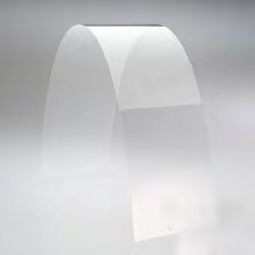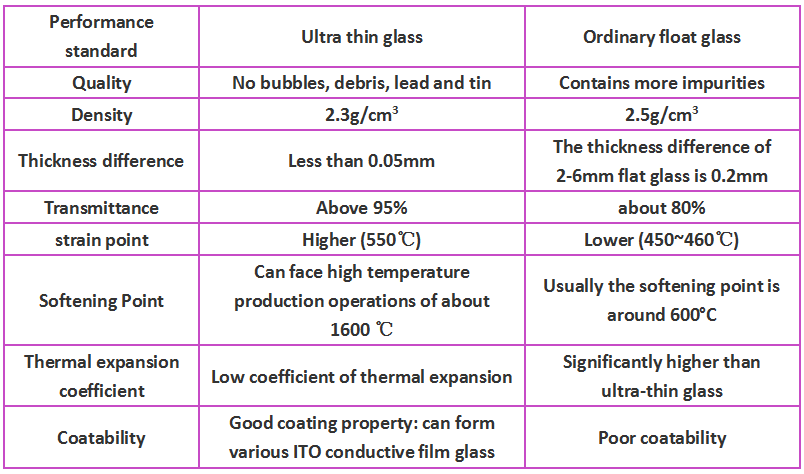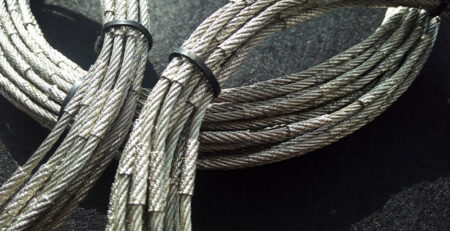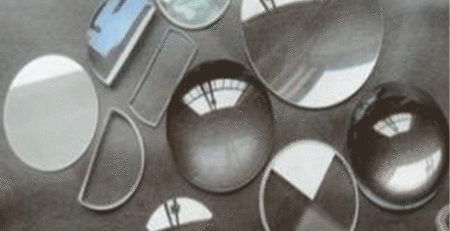Ultrathin Glass Overview
Ultrathin glass is also called ultra-thin electronic touch glass, with a thickness of 0.1-1.1 mm. Liquid crystal displays in the electronic information industry generally use 0.55-1.1 mm of float ultra-thin glass.

Ultra-thin glass not only has the basic characteristics of glass such as high transparency, electrical insulation, heat resistance, chemical stability and gas resistance, but also has unique characteristics such as light weight, high temperature resistance, impact resistance, flexibility, etc.
Therefore, it has broad application prospects in display panels, conductive film glass substrates, flexible substrates, smart surfaces, OLED lighting and other fields.
Glass by thickness

Ultra-thin Glass Overview – Properties
In fact, ultra-thin glass is not only thin, it has many special properties:

Ultra thin Glass Overview – Classification
According to different chemical compositions, ultra thin glass can be divided into alkali-containing glass and alkali-free glass;
According to different production processes, ultra thin glass can be divided into float method, flat draw method and down draw method;

Overview of ultra thin glass-technical indicators
Compared with ordinary glass, ultra-thin glass has unique characteristics such as light weight, high temperature resistance, impact resistance and flexibility.
Comparison of physical properties between ultra-thin glass and ordinary glass

Overview of Ultra Thin Glass – Production Process
The preparation methods of ultra-thin glass sheets mainly include float method, overflow down-draw method and vertical pull-up method.

Ultra Thin Glass Overview – Main Applications
Ultra-thin glass is mainly used in liquid crystal display panel substrates. After the rise of touch screens, ultra-thin glass is also used in touch screen covers and touch screen sensor substrates.
Figuratively speaking, smartphones generally contain four pieces of ultra-thin glass, including: two for the touch screen and two for the LCD panel.




